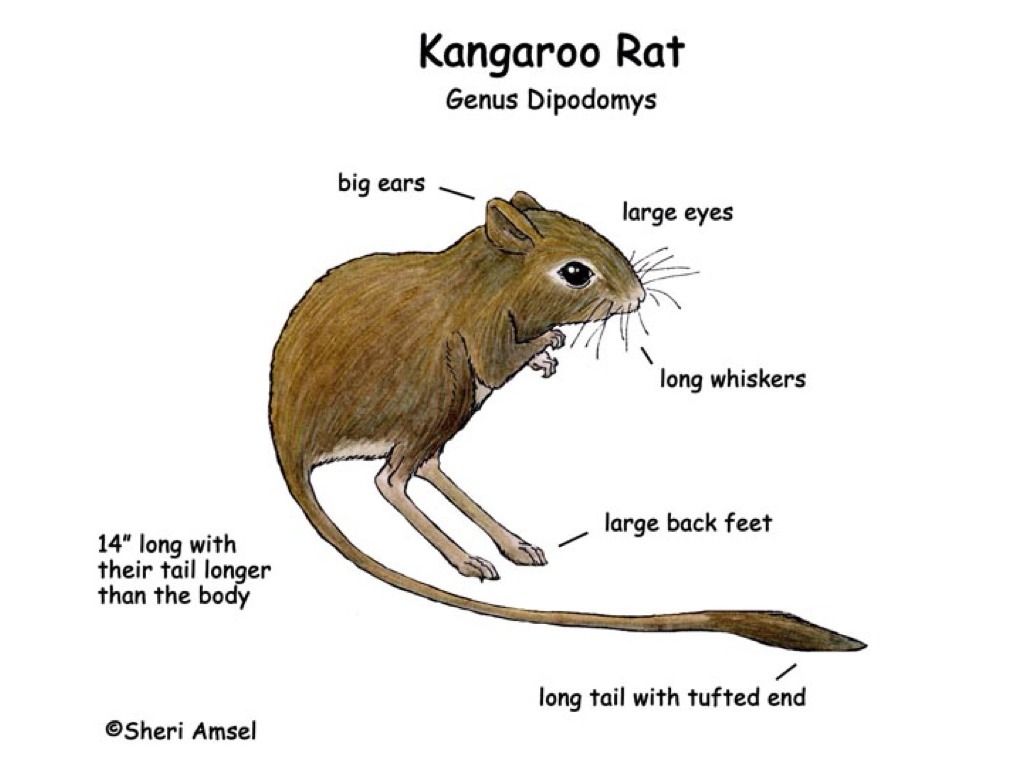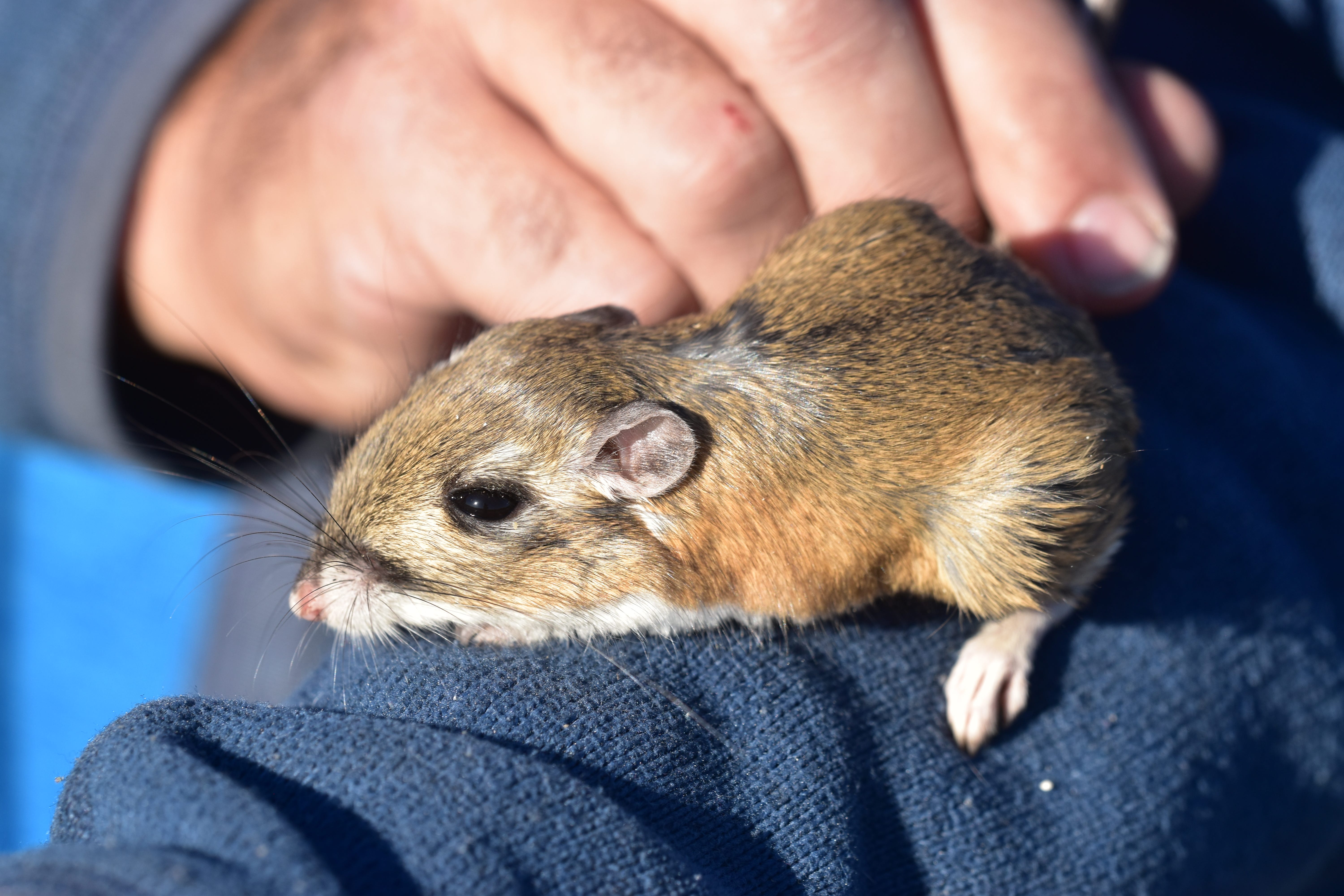As Debra Shier who co-wrote this study explained to Science News the kangaroo rat has the same taste in real estate as a lot of California developers This means relocation is a necessary conservation strategy. Kangaroo rats can extract a half gram of water out of every gram of seeds consumed.
At night after the chilly Saharan air cools the camels nasal cavity mist in its breath condenses inside its nose.

How do kangaroo rats conserve water. Kangaroo rats on the other hand take in very little water and so produce urine that is even more concentrated than that of the camel which also concentrates its urine to survive without water5 This means that the kangaroo rat loses little water in its urine. Kangaroo rats on the other hand take in very little water and so produce urine that is even more concentrated than that of the camel which also concentrates its urine to survive without water. They are unique animals and have the special ability to get water from the dry seeds they eat.
Camels dont actually store water in their humps so they have to conserve it. Thanks to Shier and co-researcher Ronald Swaisgood moving day may go a little smoother for this endemic and endangered species. They do not sweat or pant like any other animal and thus do not loose water from their bodies.
Its kidneys are also able to excrete a very concentrated form of urine so as to conserve water. To help conserve water they produce very concentrated urine via a process apparently associated with expression of aquaporin 1 along a longer than usual segment of the descending limb of the loop of. Kangaroo rats achieve the ability to be sustained on limited water by having incredibly derived kidneys.
1 nocturnal activity may be more cold- stressed than heat. Scientists have marvelled at how the kangaroo rats kidney works. To remove waste without losing water many species have developed mechanisms to concentrate their urine.
They have the ability to conserve water. This happens in the kidneys. The kangaroo rat is able to extract water from the food it takes in.
Merriams kangaroo rats obtain enough water from the metabolic oxidation of the seeds they eat to survive and do not need to drink water at all. Kangaroo rats on the other hand take in very little water and so produce urine that is even more concentrated than that of the camel which also concentrates its urine to survive without water. Scientists have marvelled at how the kangaroo rats kidney works.
This means that the kangaroo rat loses little water in its urine. Kangaroo rats are well adapted to the desert environment and can survive with very little water. Small mammals in hot deserts.
During the heat of the day they stay in their underground burrows to stay cool. Body Despite living in the heat of the desert kangaroo rats dont sweat. Their nasal passages allow them to conserve water by reabsorbing moisture from their own breath.
Kangaroo rats achieve the ability to be sustained on limited water by having incredibly derived kidneys. Instead they will take a dust bath by rolling around in the sand. This happens in the kidneys.
Scientists have marvelled at how the kangaroo rats kidney works. Kangaroo rats as an example A 50-g kangaroo rat out in the mid-day sun in a hot desert would need to evaporate water equivalent to 13 of its body mass each hour to maintain normal Tb. For conserving water some animals have thick insulating fur some have long legs to stay high up from the warm ground some have large ears while some can store huge amount of metabolic fats in their body some creatures are nocturnal and with many more adaptations.
Kangaroo Rats dont even need water to bathe. Their kidneys reduce and concentrate their urine to almost a crystal-like consistency greatly reducing the amount of water that is lost. These animals take dust baths instead of water baths wallowing in the sand.
There seems to be an inverse correlation of body mass to ability to concentrate urine. Nasal passages of kangaroo rats possess a special cooling system which reduces loss of moisture and helps the animals cool off. Without water would reach lethal limit of dehydration in around 2 hrs.
To do so they follow various ways to conserve water in their bodies. Kangaroo rats do not sweat or pant to cool themselves as this would use up water. There seems to be an inverse correlation of body mass to ability to concentrate urine.
This means that the kangaroo rat loses little water in its urine. Behold the powers of pee. Show Me The Proof.
To remove waste without losing water many species have developed mechanisms to concentrate their urine. It is said that whilst underground in their cool humid burrows where they spend the majority of their time kangaroo rats retain as much water as possible by effectively recycling water which would otherwise be lost in their breath. Due to their special kidneys these kangaroo rats are able to get rid of waste materials with minimum release of moisture.
Yes a kangaroo rats kidneys are so efficient and its pee is so concentrated that it helps them survive without water for their entire life cycle.
 Kangaroo Rat Jumping Presentation Software That Inspires Haiku Deck Kangaroo Rat Kangaroo Australian Mammals
Kangaroo Rat Jumping Presentation Software That Inspires Haiku Deck Kangaroo Rat Kangaroo Australian Mammals
 What Is The Lifespan Of A Kangaroo Rat Kangaroo Rat Kangaroo Rats
What Is The Lifespan Of A Kangaroo Rat Kangaroo Rat Kangaroo Rats
 Kangaroo Rat Can Jump 6 Feet Outdoors Helenair Com
Kangaroo Rat Can Jump 6 Feet Outdoors Helenair Com
 Around Kansas Meet Kangaroo Rats From Western Kansas June 29 2016 Youtube
Around Kansas Meet Kangaroo Rats From Western Kansas June 29 2016 Youtube
 Bitter Creek Wildlife Refuge Creates Ideal Habitat For Giant Kangaroo Rat Sacramento Fish Wildlife Office
Bitter Creek Wildlife Refuge Creates Ideal Habitat For Giant Kangaroo Rat Sacramento Fish Wildlife Office
 How To Catch A Kangaroo Rat San Diego Zoo Institute For Conservation Research
How To Catch A Kangaroo Rat San Diego Zoo Institute For Conservation Research
 Pretty Looks Can Be Deceiving A Field Of Yellow Ball Shaped Flowers By U S Fish And Wildlife Service Medium
Pretty Looks Can Be Deceiving A Field Of Yellow Ball Shaped Flowers By U S Fish And Wildlife Service Medium



